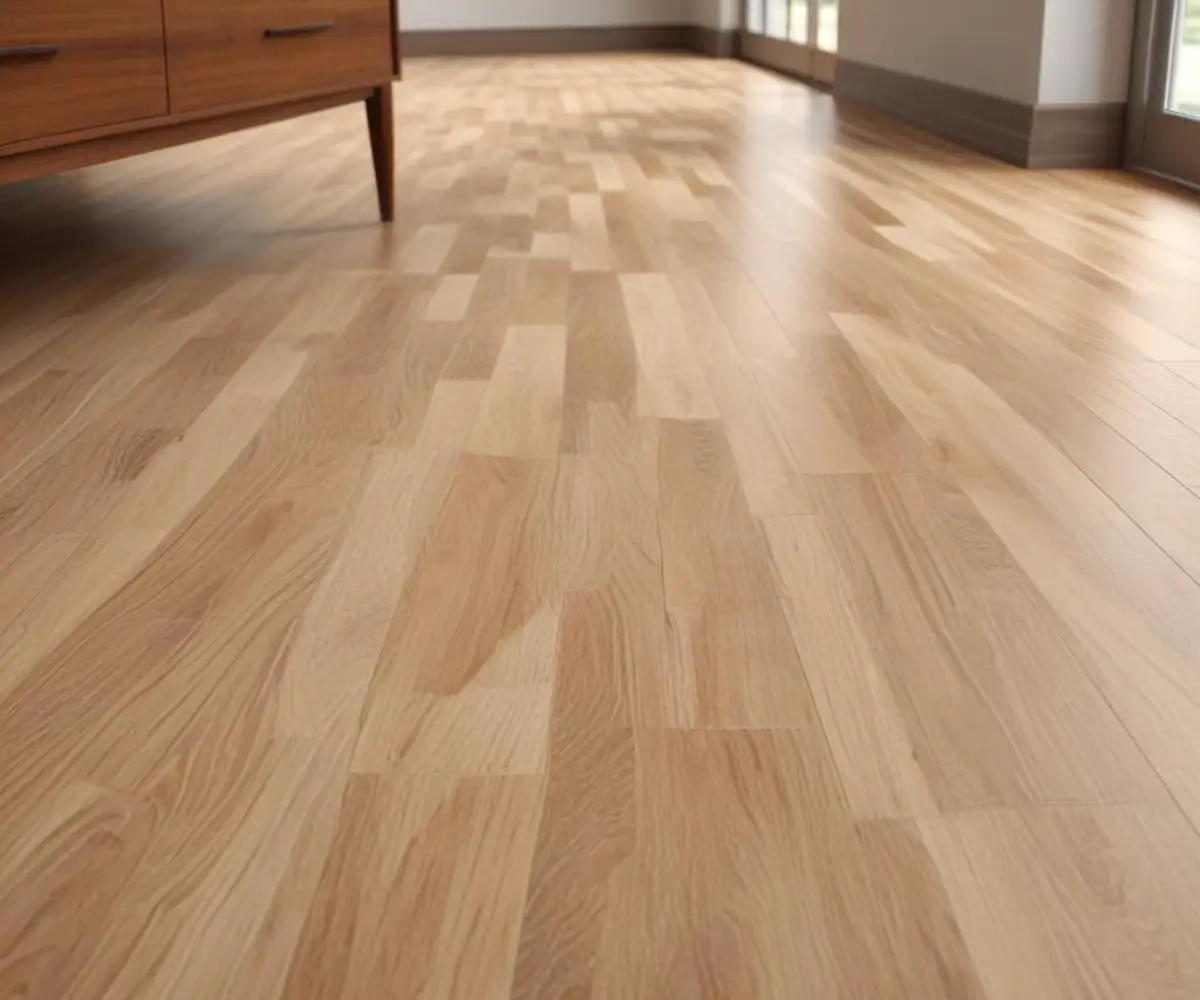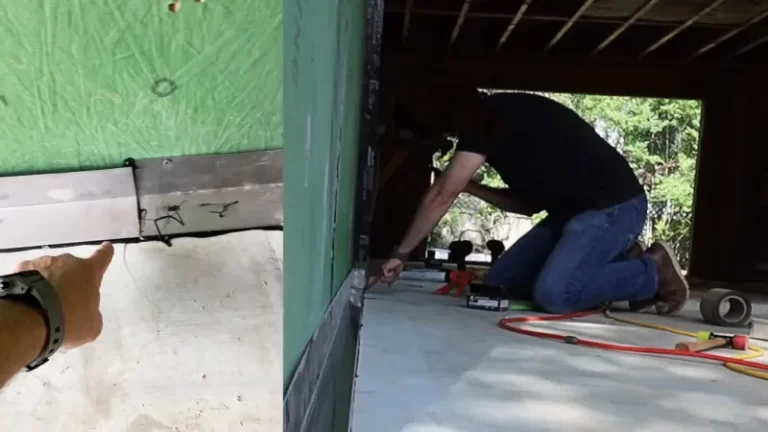Southwind LVP Reviews: The Unvarnished Truth Before You Buy
Choosing the right luxury vinyl plank (LVP) flooring feels like navigating a minefield. You face a wall of confusing acronyms, competing brands, and the lingering fear of investing thousands into a floor that quickly scratches, dents, or peels. The core problem for homeowners is cutting through the marketing noise to find a durable, beautiful, and waterproof floor that genuinely stands up to the rigors of daily life, from pets and kids to accidental spills.
This decision paralysis stems from a lack of clear, honest information. Many homeowners struggle to understand what truly matters in an LVP product. Is a thicker plank always better? What does a “20 mil wear layer” actually mean for your high-traffic kitchen? This guide offers a solution by providing an in-depth, unvarnished look at Southwind LVP, empowering you to make a confident and informed choice for your home.
You'll Learn About
Decoding Southwind: What Sets This LVP Apart?
Southwind Building Products entered the hard surface flooring market with a clear focus on producing high-quality LVP that mimics the authentic look of hardwood. While a smaller brand compared to industry giants, Southwind has gained traction for its focus on robust construction and realistic designs. Their products are primarily known for having a thick overall plank, a substantial wear layer, and an attached underlayment for sound reduction and comfort.
Understanding their core offerings is the first step to seeing if they fit your needs. Southwind’s collections are engineered to solve specific homeowner problems, from needing extreme durability in a busy hallway to wanting a quieter floor in a second-story bedroom. Each collection combines specific materials and technologies to achieve these goals.
Core Collections: Authentic Plank vs. Harbor Plank
Southwind’s most popular lines are often the subject of comparison, primarily the Authentic Plank and Harbor Plank collections. Authentic Plank is frequently positioned as their premier offering, boasting wide 9-inch by 60-inch planks that create a spacious, high-end look. It features an Embossed In Register (EIR) texture, meaning the surface grain texture perfectly aligns with the printed wood visual, creating a strikingly realistic appearance.
Harbor Plank, on the other hand, typically comes in narrower 6-inch by 48-inch planks. While still highly durable and waterproof, its aesthetic often leans toward rustic and reclaimed wood visuals. Both collections generally feature a robust 8mm total thickness and a commercial-grade 20 mil wear layer, making them suitable for both residential and light commercial use. The choice between them often comes down to aesthetic preference and desired plank size.
Understanding the Technical Specifications
Technical specs are the DNA of an LVP floor, dictating its performance and longevity. Southwind products consistently feature a 20 mil urethane wear layer, which is a critical feature for durability. This top layer is what protects the printed design from scratches, scuffs, and stains. A 20 mil thickness is considered the standard for high-traffic residential and light commercial applications, offering substantial protection against daily wear.
Most Southwind collections utilize a WPC (Wood Plastic Composite) core. WPC cores are known for being thicker, lighter, and more comfortable underfoot than their SPC (Stone Plastic Composite) counterparts. This construction also provides better sound insulation. Every plank comes with a pre-attached IXPE pad, a closed-cell foam underlayment that enhances comfort, reduces noise, and helps mask minor subfloor imperfections.
The Pros: What Homeowners Genuinely Appreciate
In countless reviews, homeowners consistently praise Southwind LVP for its durability and high-end appearance. The combination of a thick plank and a 20 mil wear layer proves effective against the challenges of active households. Many users report the flooring successfully resisting scratches from pets and the constant traffic of children, looking new even years after installation.
The aesthetic quality is another major selling point. The use of detailed texturing and Embossed In Register technology on collections like Authentic Plank earns high marks for realism. Homeowners often note that guests mistake the LVP for genuine hardwood, a testament to the quality of the visual design. This allows for a cohesive and elegant home design, where the flooring can beautifully complement popular paint choices, such as the sophisticated tones of a color like Sherwin-Williams Wedgewood Gray.

Unwavering Durability in Real-World Conditions
The primary concern for any flooring investment is its ability to withstand daily life. Southwind’s construction directly addresses this. The 20 mil wear layer, often enhanced with additives like their ScratchResist™ coating, provides a formidable shield against scuffs and scratches. This is especially crucial in homes with pets, where claws can quickly damage lesser floors.
Furthermore, the high-density WPC core contributes to the floor’s stability and impact resistance. While WPC is slightly softer than SPC, making it more susceptible to dents from extremely heavy dropped objects, it holds up remarkably well under normal household conditions, including heavy furniture when proper protectors are used.
The Power of Waterproof Flooring
One of the most significant advantages of Southwind LVP is its 100% waterproof construction. The composite core is impervious to water, meaning the planks will not swell, warp, or buckle when exposed to moisture. This makes it an ideal flooring choice for kitchens, bathrooms, laundry rooms, and basements.
This waterproof feature provides incredible peace of mind, protecting your subfloor from everyday spills and more significant plumbing issues. Knowing your floor is safe from mishaps, like those that can occur when it takes 5 minutes to get hot water, which might signal a hidden leak, adds a layer of security to your investment.
The Cons: Potential Drawbacks and Considerations
No product is perfect, and it’s essential to consider the potential downsides of Southwind LVP. While many find the installation straightforward due to the Uniclic locking system, others have noted that subfloor preparation is absolutely critical. Any unevenness or imperfections in the subfloor can translate to the final surface, potentially causing issues with the locking system over time.
Another point of consideration is the WPC core. While it offers superior comfort and sound insulation, it is not as dense as an SPC core. This means it can be more prone to denting from very heavy, sharp impacts. For homeowners who anticipate frequent dropping of heavy items, an SPC floor might be a more suitable, albeit less comfortable, alternative.
| Feature | Southwind LVP (Typical Specs) | Industry Standard LVP (Mid-Range) |
|---|---|---|
| Core Type | WPC (Wood Plastic Composite) | SPC or WPC |
| Overall Thickness | 6.5mm – 8mm | 4mm – 6mm |
| Wear Layer | 20 mil Urethane with ScratchResist™ | 12 mil – 20 mil |
| Attached Pad | Yes (1.5mm IXPE) | Often, but not always (Cork or EVA) |
| Plank Size | Wide (e.g., 9″ x 60″) or Standard (6″ x 48″) | Varies, often 6″ x 48″ |
| Texture | Detailed Texture, often Embossed In Register (EIR) | Standard Embossing |
| Waterproof | Yes, 100% waterproof core | Yes, typically waterproof |
Installation Essentials: Avoiding Common Pitfalls
A successful LVP installation begins long before the first plank is laid. Proper subfloor preparation is non-negotiable. The subfloor must be clean, flat, and dry. Southwind specifies a flatness tolerance that must be met to ensure the locking mechanism functions correctly and to prevent planks from separating over time.
The importance of a sound subfloor cannot be overstated. While your situation is likely not as extreme as needing dirt floor garage solutions, the principle is the same: the final flooring is only as good as the foundation it rests upon. Taking the time to level and prepare the subfloor will prevent a host of problems down the road.
Acclimation and Expansion Gaps
Like many floating floors, Southwind LVP requires an acclimation period. The unopened boxes should be left in the room where they will be installed for at least 48 hours. This allows the planks to adjust to the home’s ambient temperature and humidity, preventing expansion or contraction issues after installation.
Equally important is leaving the correct expansion gap around the perimeter of the room. This gap, typically about 1/4 inch, allows the entire floor to “float” or expand and contract with seasonal changes. Without this space, the floor can buckle or warp.
Long-Term Care for Lasting Beauty
Maintaining Southwind LVP is relatively simple, but using the correct methods is key to preserving its finish. Regular sweeping or vacuuming (using a hard floor setting without a beater bar) is essential to remove abrasive dirt and debris. For deeper cleaning, the manufacturer recommends a pH-neutral cleaner designed for vinyl floors.
It is critical to avoid using harsh chemicals, wax-based cleaners, or steam mops. These products can damage the protective urethane wear layer, leaving a dull film on the surface or even causing it to peel. A simple solution of water with a small amount of approved vinyl cleaner is all that is needed.
Final Verdict: Is Southwind LVP the Right Investment for You?
Southwind LVP presents a compelling option for homeowners seeking a balance of durability, aesthetic beauty, and comfort. Its robust 20 mil wear layer and waterproof WPC core make it a reliable choice for active households, particularly those with pets and children. The brand’s commitment to realistic wood visuals, especially in collections like Authentic Plank, ensures you don’t have to sacrifice style for performance.
However, the ideal candidate for Southwind flooring is a homeowner who understands the critical importance of proper subfloor preparation and is willing to invest the time or money to ensure it is done correctly. While its WPC core is comfortable, those in environments with a high risk of heavy impacts may want to compare it with denser SPC alternatives. Ultimately, for those prioritizing a quiet, comfortable, and beautiful waterproof floor that convincingly mimics real hardwood, Southwind LVP stands as a strong and worthwhile contender in a crowded market.

